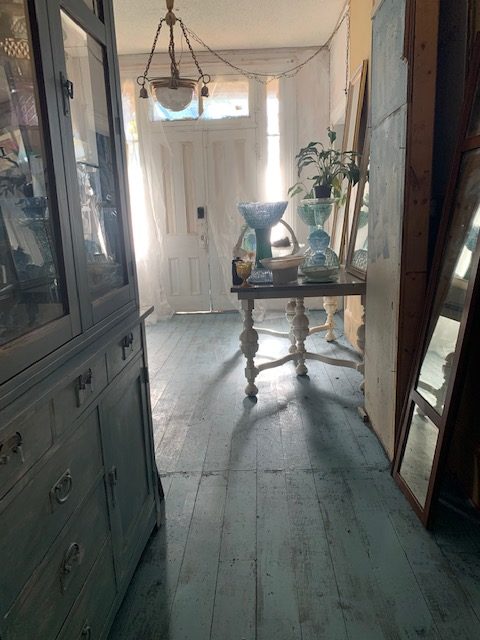
Even as a child, Maurie Van Buren thought one day she might like to live in Virginia. She never could have predicted, however, the route that would eventually bring her here.
Maurie started out in Atlanta, Georgia, where she was born, but by the time she was three, her father moved the family to Nuremburg, Germany where she spent much of her childhood. It was there she became fascinated with history and architecture. Everywhere she went, the buildings had been constructed as expressions of art. When her family returned to Atlanta, she found the contrast jarring. At the first opportunity, she signed up for a study abroad program and spent her last year of high school in Vienna.
Maurie’s experiences in Europe instilled in her a passion for architecture and historic preservation, and so, after high school, she elected to go to the University of Delaware whose affiliation with Winterthur Museum drew many artists and historians. Her experience there persuaded her to study archeology in England, and so she attended Cambridge University, but after spending tedious hours sitting in the dirt of an Iron Age settlement studying food storage techniques, she found the work too boring to hold her attention. She left Cambridge and moved to Dublin where she worked for an interior designer before returning to the States.
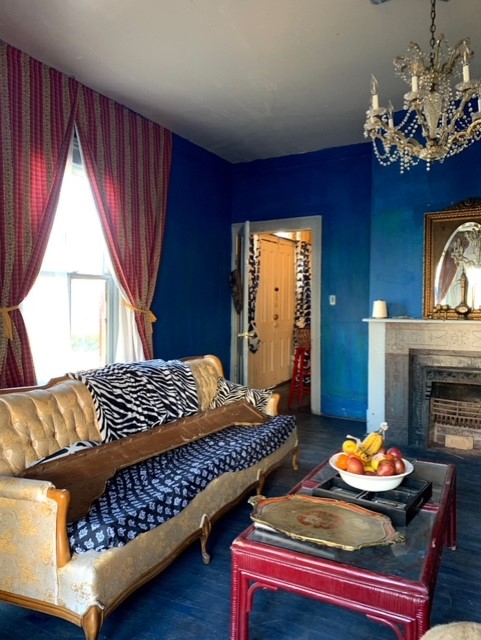
Back in Georgia she accepted a job as a preservation planner for five rural counties. Europe, however, and the drive to further her education, lured her back to England where she enrolled in the University of York’s Institute of Advanced Architectural studies. Upon returning to the States, she resumed her consulting business, authored a book, and started a regular column in Home Magazine. It was also there she owned a historic home.
After marriage and divorce, Maurie moved to New Mexico, where the desert helped her to heal and where she felt inspired to invest in real estate, particularly in unique properties. Wherever she lived, from Georgia to Massachusetts, from New York to New Mexico and even abroad, she has lived in historic buildings. Some she restored, others she simply lived in and enjoyed, “some grand, some modest … all of them funky,” she says.
In 2008, however, with the stock market and real estate crashes, Maurie lost everything. She moved to New York City where she began working for FEMA. After four years, she moved to Southern California to take care of her son. Another FEMA deployment took her to New Orleans, where she was once more surrounded by historic architecture. She spent that time saving her money in the hopes of buying another historic home to live in. And that’s when fate brought her to Virginia.
 Maurie started her search for a new old house by searching on Circa’s website. When listings in Danville kept coming up, she thought she’d take a trip to see it for herself. She looked at houses all around the neighborhood, but she saw nothing that really spoke to her. She wasn’t necessarily looking for anything large, but she needed something that sparked her creativity, and which had good bones.
Maurie started her search for a new old house by searching on Circa’s website. When listings in Danville kept coming up, she thought she’d take a trip to see it for herself. She looked at houses all around the neighborhood, but she saw nothing that really spoke to her. She wasn’t necessarily looking for anything large, but she needed something that sparked her creativity, and which had good bones.
The last house she saw was the Watson House at 125 Chestnut Street. She knew the moment she entered that it was the house for her. The way the light flooded in through the windows and the charm of the place really appealed to her.
The house had been divided into four apartments. In fact, in the 1960’s and 70’s, the neighborhood was an enclave for Greek immigrants. Since Maurie considers herself more of a caretaker than an owner, she hopes to honor all of its history and not just parts of it.
Maurie’s methods these days are more about preservation than restoration. Homes need people, she says, and they die and languish without them.
“Preservation isn’t about making it look just as it did in the moments after it was just built but bringing a house back to life.” It’s also about making sure any changes made today are reversable by those who come after us. For instance, linoleum tiles she has put down I the entrance protect the wood floor, but they are only laid down and adhered to the floor with tape. The kitchen is a gallery style kitchen like that which she had in New York City. She doesn’t do much cooking, and so spending tens of thousands of dollars on cabinetry and appliances doesn’t make sense to her. Instead, her kitchen is made up of casegoods and industrial, restaurant grade surfaces and storage units, including the sink, all of which can be picked up and moved out if her design implementations don’t fit with the next owners—though she has no plans to leave.
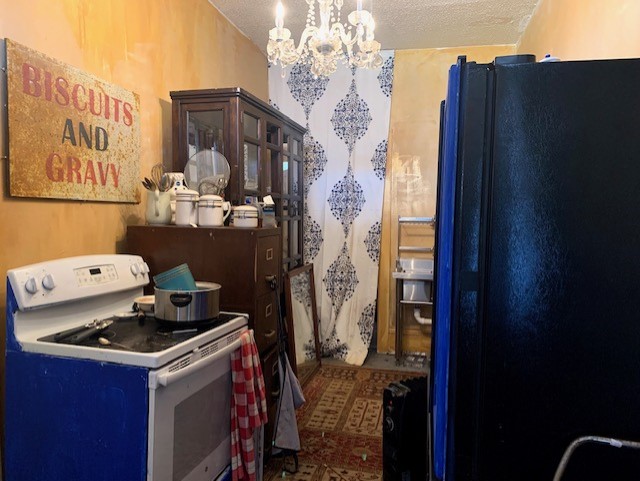
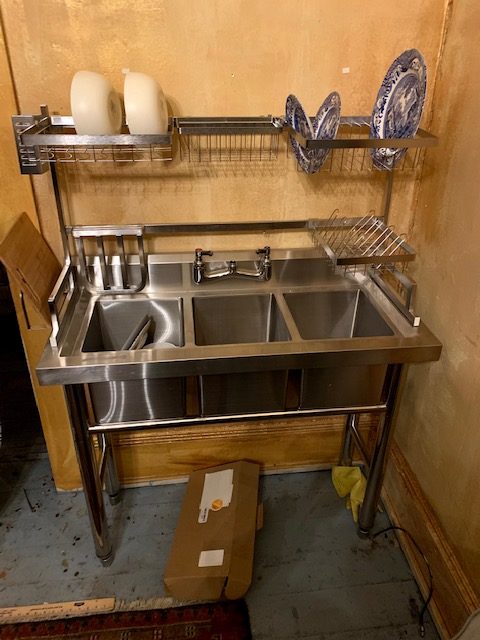
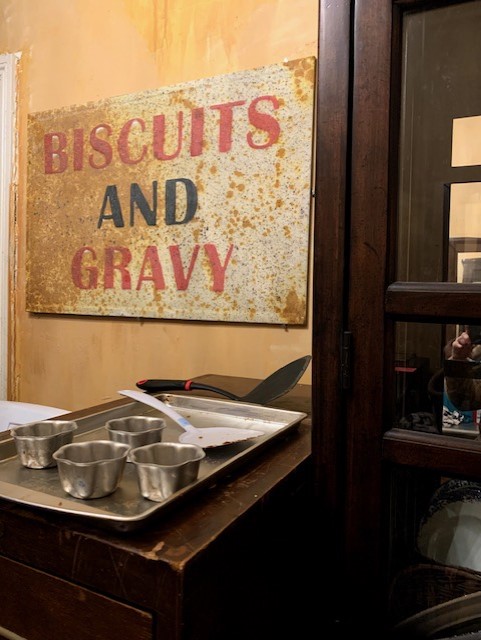
Every item in the New York-style gallery kitchen is removable, keeping with the theme of “reversible implementation” of modern appointments.
The house was built originally as a pre-Civil War house facing Pine Street, but sometime later a second façade was added facing Chestnut Street.
Living in an old house requires not only creativity, but also something of a pioneer mentality, Maurie insists. Many of these homes have not been fitted with modern conveniences. Today’s standards of living are expensive and often invasive. Maurie is determined to find ways to make her home comfortable without changing the integrity of the house.
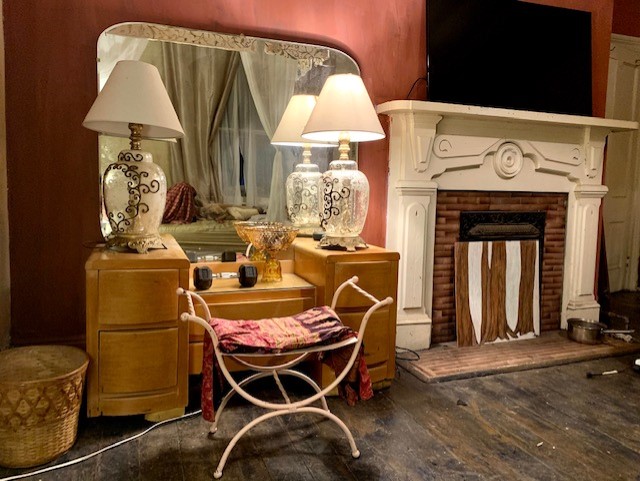 Maurie approaches preservation with a sense of humor. “These houses should be fun,” she says. “They should inspire. They should have a sense of humor.” Her decoration changes over time, as well. “My environments are fluid, a living, dynamic thing.” Her interiors often include a Moroccan themed room, and she uses a lot of mirrors in order to ricochet light and to make the spaces appear larger. She enjoys lots of fabrics, textures, and bold colors as well.
Maurie approaches preservation with a sense of humor. “These houses should be fun,” she says. “They should inspire. They should have a sense of humor.” Her decoration changes over time, as well. “My environments are fluid, a living, dynamic thing.” Her interiors often include a Moroccan themed room, and she uses a lot of mirrors in order to ricochet light and to make the spaces appear larger. She enjoys lots of fabrics, textures, and bold colors as well.
The Watson house was unoccupied for six years before Maurie purchased it. “You could really feel how unhappy it was.” Now, using bold colors and textures, it is comfortable and welcoming. “you can tell when a house isn’t happy, when a choice isn’t right,” she says. “The house will tell you.”
As for living in the Old West End, Maurie says she loves walking around the neighborhood. “The built-in environment is so great. I love the diversity, including those who have lived in the neighborhood for much longer than I have and who have seen it change over time.” She enjoys talking to the people and looks forward to getting to know them better when it’s safer to do so. She also says she’s impressed by city’s commitment to stand by the Old West End and support its revitalization.
